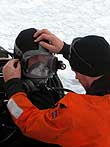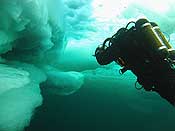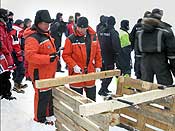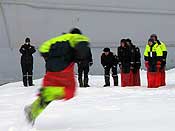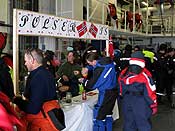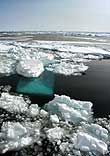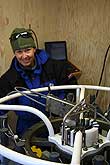Brrr!
The sea ice scientists, and to some extent the biologists are interested to know how much light penetrates though the ice to reach the water below (sunlight light warms up the ice and the water underneath and also allows algae to grow there). How do they measure how much light gets through the ice? Simple: send a diver with a light meter underneath! The first two pictures show a military diver from the crew, getting ready to enter the icy (literally) waters, while the last two pictures (taken by the divers) show the wonderful world underneath. The water temperature is roughly -2, while the air temperature is about -10.

